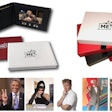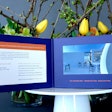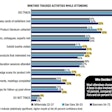
To ensure that guests have enough time to plan for an event—and that planners have enough time to prepare for them—it's essential to stick to a timeline when dealing with event invitations. Here are expert tips for sending out invites, gathering R.S.V.Ps, and distributing post-event materials in a timely matter.
1. "As an invitation-based system, our data tells us the that best R.S.V.P. rates come from sending invites three to four weeks before the registration deadline," says Alex Litoff, head of client services at Event Farm.
2. Timelines can, however, depend on the size of an event. For a small gathering, it can even be acceptable to send out invites one to two weeks in advance, says Leila Najafi, senior marketing metro manager of Eventbrite. But for larger events such as conferences for festivals, Najafi says that attendees should be invited at least a month in advance.
3. Wedding invitations require the longest timeline to plan, especially because there can be several events preceding the big day. James Hirschfeld, founder of Paperless Post, advises couples to design their engagement-party invitations eight to 10 months before the wedding, and to use that same time frame to design save-the-dates. The save-the-date cards should go out four to six months before the wedding, he says.
4. For what he calls "the big mailing" (that of formal wedding invitations), Hirschfeld says that couples should send out the invites two to four months before the wedding. Invites for rehearsal dinners, wedding brunches, and bachelorette or bachelor parties can go out one to two months before the events take place.
5. On invitations for any event, be sure to give guests a deadline for responses. "By closing R.S.V.P.s a week before [the event], you create a sense of urgency while allowing yourself enough time to invite additional guests if you’re below your ideal target," Litoff says. "Give yourself time to build, implement, and—if need be—adjust your strategy."
6. Don't be too firm with the R.S.V.P. deadline, though. "If your event has loose parameters, why not keep the guest list open for as long as possible? The more the merrier," Litoff says. "However, if your event does have very a structured setup involving a seating chart or limited space, it's important to know how many guest are coming so you can plan accordingly." In a nutshell: "Close the guest list early enough to give yourself time to prepare."
7. Though they're not invites, there are also post-event materials to consider. "Event engagement doesn’t end when your guests head out the door—make the most of email as a communication tool," Litoff says. "Instead of just sending out an impersonal note to your entire contact list, reach out to just those guests who actually attended your event. Send them a coupon for a bottle of the night’s most popular drink, share a link to the photo booth pictures, thank them personally. Get creative!" For wedding thank-you notes, Hirschfeld says to send those out out promptly after the honeymoon. And "with any type of event, you want to send a thank-you note to guests to drive the conversation online," Najafi says. She suggests prompting that conversation by sending digital event photos that guests can share or like on Facebook.



















